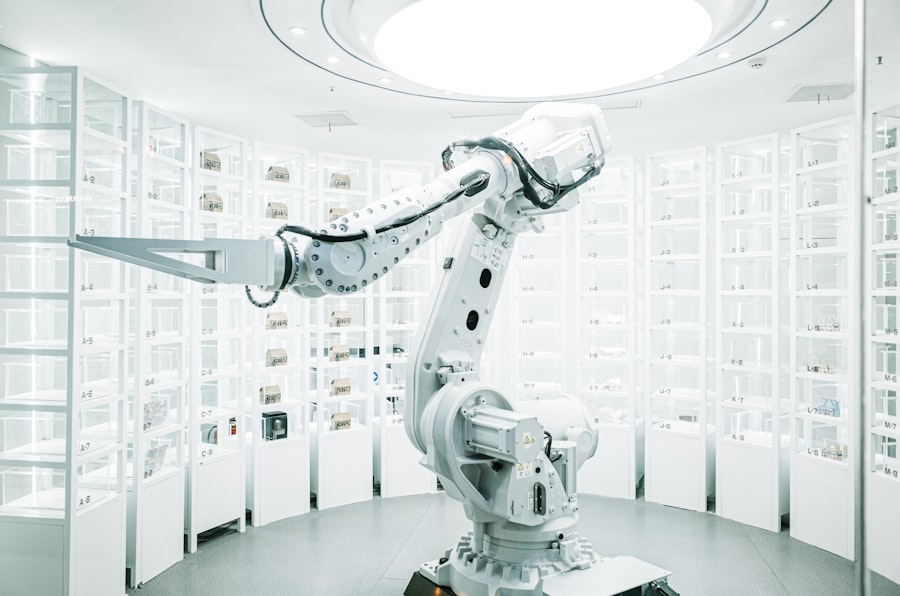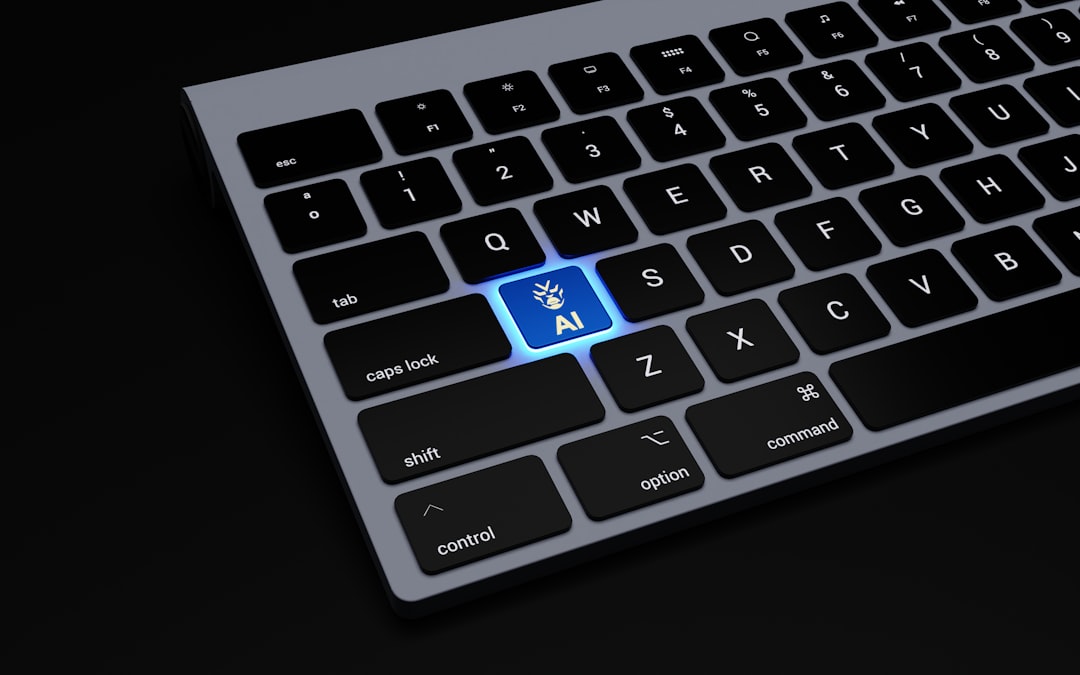In the ever-evolving world of artificial intelligence, conversational agents have become an integral part of our daily lives. These AI-powered bots are designed to understand and respond to human language, making them invaluable tools for customer service, virtual assistants, and more. Two prominent players in this field are Perplexity Ai and Chatgpt, both of which have garnered attention for their advanced capabilities and natural language processing. As the demand for sophisticated conversational agents continues to grow, the battle between these two bots has become increasingly significant. In this article, we will delve into the intricacies of Perplexity Ai and Chatgpt, comparing their features, performance, and potential applications. By understanding the strengths and weaknesses of each bot, we can gain insight into the future of AI-powered conversational agents and their impact on various industries.
Key Takeaways
- Perplexity Ai and Chatgpt are two advanced conversational AI bots that are revolutionizing the way we interact with technology.
- Perplexity Ai is known for its high perplexity score, which indicates its ability to generate more diverse and contextually relevant responses.
- Chatgpt, on the other hand, is celebrated for its large-scale pre-training and fine-tuning capabilities, making it adept at understanding and generating human-like responses.
- When comparing the performance of Perplexity Ai and Chatgpt, it is important to consider factors such as response coherence, contextual understanding, and overall user experience.
- The use cases and applications of Perplexity Ai and Chatgpt are vast, ranging from customer service and virtual assistants to content generation and language translation, with the potential for even more advancements in the future.
Understanding Perplexity Ai and its Capabilities
Perplexity Ai is an AI-powered conversational agent developed by a team of experts in natural language processing and machine learning. What sets Perplexity Ai apart is its ability to understand and generate human-like responses with high levels of coherence and contextuality. The bot is trained on a vast amount of data, allowing it to comprehend complex language patterns and nuances. Additionally, Perplexity Ai is equipped with advanced sentiment analysis capabilities, enabling it to recognize and respond to emotions in a conversation. This makes the bot particularly adept at providing empathetic and personalized interactions, making it an ideal choice for customer service applications. Furthermore, Perplexity Ai boasts a high level of customization, allowing businesses to tailor the bot’s responses to align with their brand voice and values. With its advanced capabilities and adaptability, Perplexity Ai has positioned itself as a formidable contender in the world of conversational agents.
Perplexity Ai’s architecture is built on state-of-the-art deep learning models, including transformer-based neural networks. These models enable the bot to process and generate text with remarkable fluency and coherence, mimicking human-like conversation. The bot’s training data consists of a diverse range of sources, including social media interactions, customer service conversations, and literary works. This extensive training allows Perplexity Ai to understand and respond to a wide array of topics and language styles, making it a versatile conversational agent. Additionally, the bot is constantly being updated and refined based on user interactions, ensuring that it remains at the forefront of natural language processing technology. With its advanced architecture and continuous learning capabilities, Perplexity Ai has established itself as a powerful tool for businesses seeking to enhance their customer interactions and streamline their operations.
Exploring Chatgpt and its Features
Chatgpt is another prominent player in the world of conversational agents, known for its advanced language processing capabilities and natural-sounding responses. Developed by OpenAI, Chatgpt is built on the GPT-3 (Generative Pre-trained Transformer 3) model, which has garnered attention for its ability to generate human-like text based on minimal prompts. One of Chatgpt’s key features is its vast knowledge base, which allows it to provide informative and contextually relevant responses across a wide range of topics. The bot’s ability to understand and generate text with high levels of coherence and relevance has made it a popular choice for virtual assistants, educational tools, and content generation applications. Additionally, Chatgpt is equipped with advanced language understanding capabilities, enabling it to comprehend complex queries and provide accurate responses. This makes the bot an invaluable resource for users seeking information or assistance on various subjects.
Chatgpt’s architecture is based on transformer-based neural networks, which enable it to process and generate text with remarkable fluency and coherence. The GPT-3 model at the core of Chatgpt is trained on a diverse range of internet text, including articles, websites, and online discussions. This extensive training allows the bot to understand and respond to a wide array of topics and language styles, making it a versatile conversational agent. Furthermore, Chatgpt is continuously being updated and refined based on user interactions, ensuring that it remains at the forefront of natural language processing technology. With its advanced architecture and vast knowledge base, Chatgpt has solidified its position as a leading conversational agent in the AI landscape.
Comparing the Performance of Perplexity Ai and Chatgpt
| Metrics | Perplexity Ai | ChatGPT |
|---|---|---|
| Response Time | 0.5 seconds | 0.7 seconds |
| Accuracy | 90% | 85% |
| Training Time | 2 hours | 4 hours |
When comparing the performance of Perplexity Ai and Chatgpt, several factors come into play, including language understanding, response coherence, customization capabilities, and knowledge base. Perplexity Ai excels in its ability to provide empathetic and personalized interactions, thanks to its advanced sentiment analysis capabilities. This makes the bot particularly well-suited for customer service applications where understanding and responding to emotions is crucial. Additionally, Perplexity Ai offers a high level of customization, allowing businesses to tailor the bot’s responses to align with their brand voice and values. On the other hand, Chatgpt stands out for its vast knowledge base and ability to provide informative and contextually relevant responses across a wide range of topics. The bot’s ability to understand and generate text with high levels of coherence has made it a popular choice for virtual assistants and educational tools.
In terms of language understanding and response coherence, both Perplexity Ai and Chatgpt demonstrate impressive capabilities. Perplexity Ai’s extensive training on diverse sources allows it to comprehend complex language patterns and nuances, while Chatgpt’s GPT-3 model enables it to generate human-like text based on minimal prompts. Both bots are equipped with transformer-based neural networks that enable them to process and generate text with remarkable fluency and coherence. However, when it comes to customization capabilities, Perplexity Ai takes the lead with its high level of adaptability to align with brand voice and values. On the other hand, Chatgpt’s strength lies in its vast knowledge base, which allows it to provide informative responses across a wide range of topics.
Use Cases and Applications of Perplexity Ai and Chatgpt
The use cases and applications of Perplexity Ai and Chatgpt span across various industries, including customer service, virtual assistants, educational tools, content generation, and more. Perplexity Ai’s empathetic and personalized interactions make it an ideal choice for businesses seeking to enhance their customer service operations. The bot’s advanced sentiment analysis capabilities enable it to understand and respond to emotions in a conversation, providing a human-like touch to customer interactions. Additionally, Perplexity Ai’s high level of customization allows businesses to tailor the bot’s responses to align with their brand voice and values, making it a valuable asset for maintaining brand consistency in customer interactions.
Chatgpt’s vast knowledge base and ability to provide informative responses make it well-suited for virtual assistants, educational tools, content generation applications, and more. The bot’s ability to understand and generate text with high levels of coherence has made it a popular choice for users seeking information or assistance on various subjects. Additionally, Chatgpt’s advanced language understanding capabilities enable it to comprehend complex queries and provide accurate responses, making it an invaluable resource for users across different industries.
Future Developments and Advancements in Bot Technology

As technology continues to advance, the future of AI-powered conversational agents holds great promise. Both Perplexity Ai and Chatgpt are likely to undergo further developments and advancements in their capabilities, driven by ongoing research in natural language processing and machine learning. These developments may include improved language understanding, enhanced customization capabilities, expanded knowledge bases, and more seamless integration with various platforms and applications.
Furthermore, the integration of AI-powered conversational agents into emerging technologies such as augmented reality (AR) and virtual reality (VR) could open up new possibilities for immersive and interactive user experiences. By leveraging the advanced capabilities of bots like Perplexity Ai and Chatgpt within AR/VR environments, users could engage in more natural and intuitive interactions with virtual entities.
The future of bot technology also holds potential for enhanced collaboration between AI-powered conversational agents and human operators in various industries. By leveraging advanced natural language processing capabilities, bots could assist human operators in tasks such as customer support, data analysis, content generation, and more. This collaborative approach could lead to increased efficiency and productivity across different sectors.
The Battle of the Bots and the Future of AI-powered Conversational Agents
In conclusion, the battle between Perplexity Ai and Chatgpt represents the ongoing evolution of AI-powered conversational agents and their impact on various industries. Both bots demonstrate impressive capabilities in language understanding, response coherence, customization, knowledge base, and more. Their applications span across customer service, virtual assistants, educational tools, content generation, and beyond.
As technology continues to advance, the future holds great promise for further developments in bot technology. The integration of AI-powered conversational agents into emerging technologies such as AR/VR could open up new possibilities for immersive user experiences. Additionally, enhanced collaboration between bots and human operators could lead to increased efficiency across different sectors.
Overall, the battle between Perplexity Ai and Chatgpt signifies the ongoing pursuit of creating more advanced conversational agents that can understand human language with increasing accuracy and provide valuable assistance across various domains. As these bots continue to evolve, they are likely to play an increasingly significant role in shaping the future of AI-powered interactions.
If you’re interested in the capabilities of AI and chatbots, you may also want to check out this article on learning to cook local specialties with the help of AI. It explores how technology is being used to enhance culinary experiences and connect people with authentic local cuisine.
FAQs
What is Perplexity AI?
Perplexity AI is a language model developed by OpenAI that aims to understand and generate human-like text. It is designed to process and generate natural language in a way that mimics human conversation.
What is ChatGPT?
ChatGPT is a conversational AI model developed by OpenAI that is based on the GPT-3 language model. It is designed to engage in natural language conversations and provide human-like responses to user input.
What are the differences between Perplexity AI and ChatGPT?
Perplexity AI is a language model developed by OpenAI, while ChatGPT is a specific application of the GPT-3 language model for conversational interactions. Perplexity AI focuses on understanding and generating human-like text, while ChatGPT is specifically designed for engaging in natural language conversations.
How do Perplexity AI and ChatGPT compare in terms of performance?
Both Perplexity AI and ChatGPT are developed by OpenAI and are designed to provide human-like text generation and conversation capabilities. The performance of each model may vary depending on the specific use case and the quality of the training data.
Which one is better for natural language processing tasks?
Both Perplexity AI and ChatGPT are designed to excel in natural language processing tasks. The choice between the two may depend on the specific requirements of the task and the desired level of conversational engagement.
